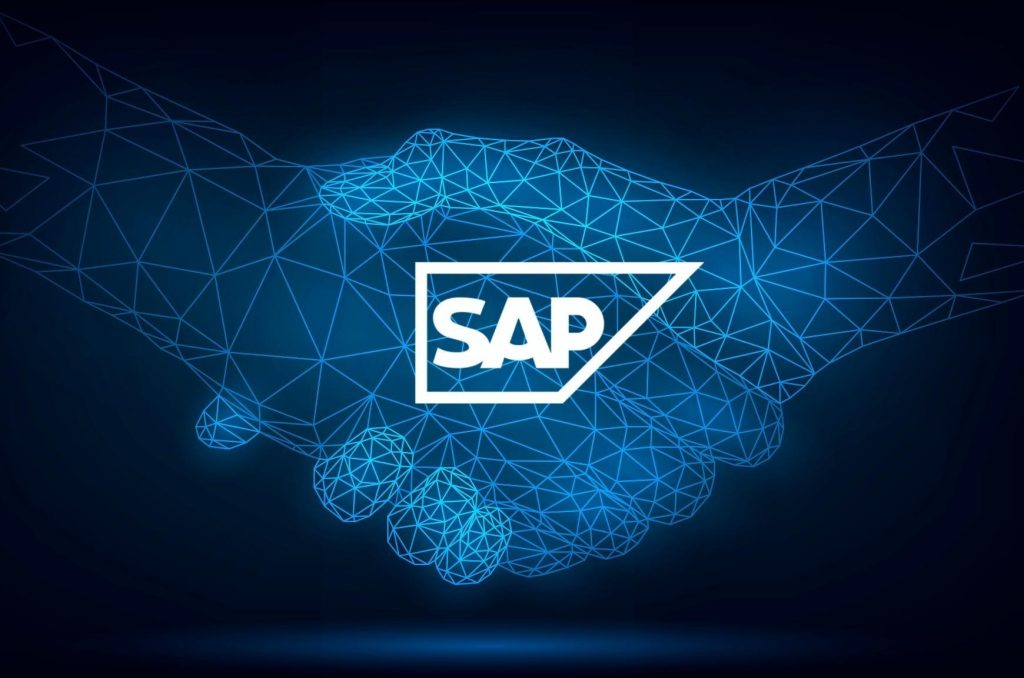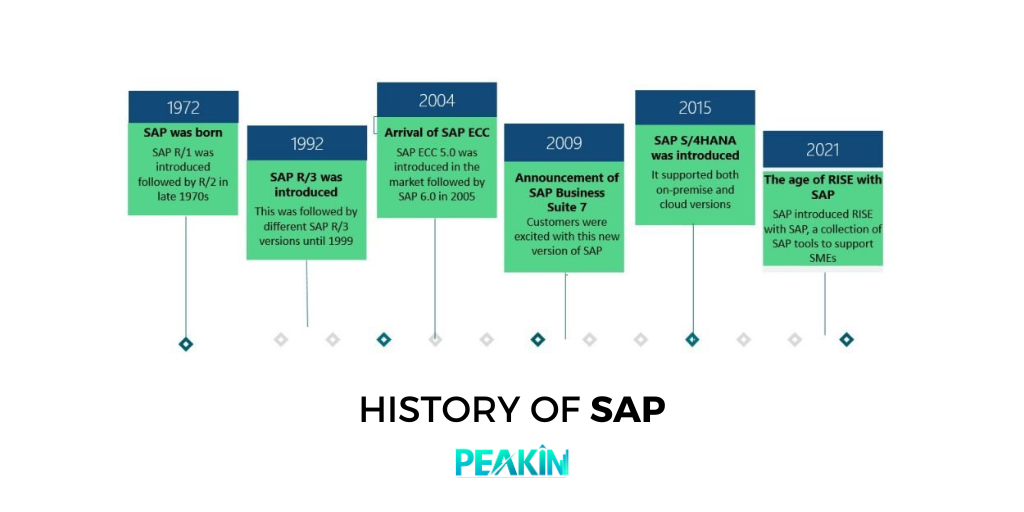
In the ever-evolving landscape of enterprise software solutions, SAP continues to stand as one of the leading providers, empowering businesses to streamline their operations, enhance productivity, and make data-driven decisions. As of 2023, SAP has continued to innovate and adapt to meet the changing needs of modern businesses. In this blog, we will explore the latest developments, trends, and features that SAP offers in its diverse range of products.
History and Evolution
SAP (Systems, Applications, and Products in Data Processing) was founded in 1972 by five former IBM employees: Dietmar Hopp, Hasso Plattner, Claus Wellenreuther, Klaus Tschira, and Hans-Werner Hector. The company initially focused on developing standard software applications for enterprise resource planning (ERP). Their first product was SAP R/1, which was released in 1973, and it was designed to run on mainframe computers.
Over the years, SAP continued to evolve its product offerings and expand its market reach. In 1979, they introduced SAP R/2, which was a more advanced version of the ERP system. However, it was the release of SAP R/3 in 1992 that marked a significant turning point for the company. SAP R/3 was a client-server-based ERP system that utilized a three-tier architecture, making it more scalable and flexible.
With the advent of the internet and cloud computing, SAP recognized the need to adapt to changing technologies and customer demands. In 2011, SAP introduced SAP HANA, an in-memory database platform that revolutionized data processing and analytics. This breakthrough allowed businesses to process large volumes of data in real-time, enabling faster insights and decision-making.

SAP's Product Portfolio
- SAP S/4HANA: At the heart of SAP’s product offering is SAP S/4HANA, an intelligent enterprise resource planning (ERP) suite designed to run on SAP’s advanced in-memory database. S/4HANA streamlines core business processes, enabling real-time data analysis, and making businesses more agile and responsive to market changes.
- SAP SuccessFactors: This cloud-based human capital management (HCM) solution helps organizations manage their workforce effectively. From talent acquisition and development to performance management and analytics, SuccessFactors empowers businesses to optimize their human resources.
- SAP Ariba: As a leading procurement and supply chain management solution, SAP Ariba simplifies purchasing processes, enhances supplier collaboration, and improves overall supply chain visibility. It enables businesses to connect with a vast network of suppliers and drive cost savings.
- SAP Concur: For efficient expense management and travel booking, SAP Concur comes to the rescue. It offers end-to-end solutions for managing expenses, travel bookings, invoicing, and more, streamlining financial processes and increasing compliance.
- SAP Customer Experience: Formerly known as SAP C/4HANA, this suite encompasses a set of cloud-based applications tailored for sales, marketing, commerce, service, and customer data. By providing a 360-degree view of customers, businesses can deliver exceptional experiences and build lasting relationships.
- SAP Analytics Cloud: Combining business intelligence, augmented analytics, and planning capabilities, SAP Analytics Cloud empowers organizations to uncover meaningful insights from their data, fostering data-driven decision-making across all levels.
- SAP Business Technology Platform (BTP): Formerly known as SAP Cloud Platform, BTP acts as an integration and extension platform for SAP’s products. It enables developers to build, extend, and integrate applications using SAP’s technologies and APIs.
Recent Updates and Innovations
- AI and Machine Learning: SAP has heavily invested in incorporating artificial intelligence (AI) and machine learning (ML) capabilities across its product portfolio. These technologies enhance automation, predictive analytics, and natural language processing, enabling users to make better decisions and optimize processes.
- Blockchain Integration: SAP has been exploring the potential of blockchain technology to improve transparency and trust in supply chain and financial processes. By leveraging blockchain, businesses can trace products, verify transactions, and ensure data integrity.
- Sustainability Solutions: With growing global awareness of sustainability, SAP has introduced solutions to help organizations track and reduce their carbon footprint. These solutions enable companies to achieve their environmental goals and contribute to a more sustainable future.
- Experience Management (XM): SAP has integrated XM capabilities into its products to measure and enhance the experiences of customers, employees, and partners. By gathering feedback and sentiment data, businesses can identify pain points and opportunities for improvement.
- Rapid Implementation Services: SAP has streamlined its implementation processes, offering more rapid deployment options. This helps businesses to onboard and start leveraging the benefits of SAP solutions more quickly and efficiently.
Conclusion
In conclusion, SAP remains a dominant force in the enterprise software market in 2023. With its extensive and diverse product portfolio, SAP caters to the varying needs of organizations worldwide, from small businesses to large enterprises. The company’s focus on innovation, AI, machine learning, and sustainability demonstrates its commitment to staying at the forefront of technology and addressing the challenges of the modern business landscape.
As we move forward, SAP will likely continue to evolve its offerings to adapt to emerging technologies and changing market demands. Whether you’re looking to streamline your business processes, enhance customer experiences, or optimize your workforce, SAP has a solution to meet your needs. Stay tuned here for further SAP updates and enhancements
